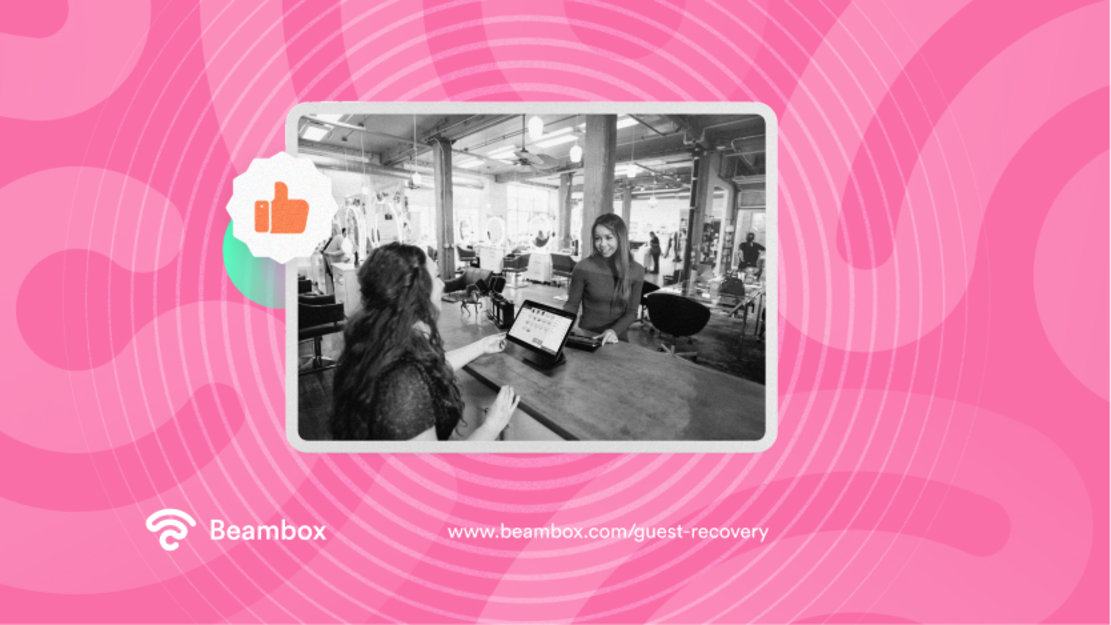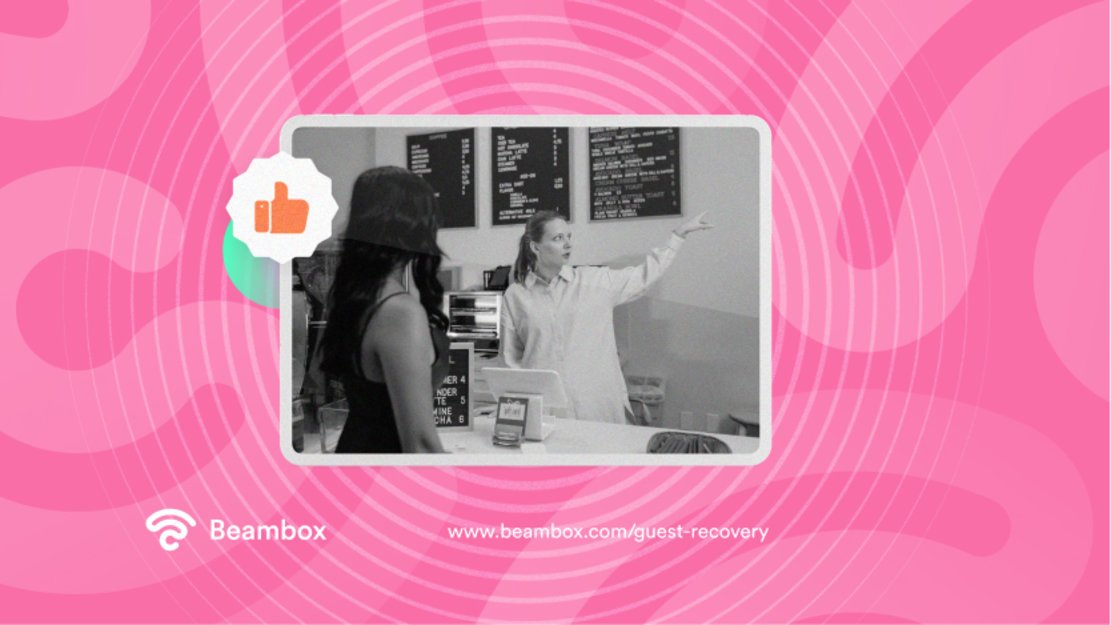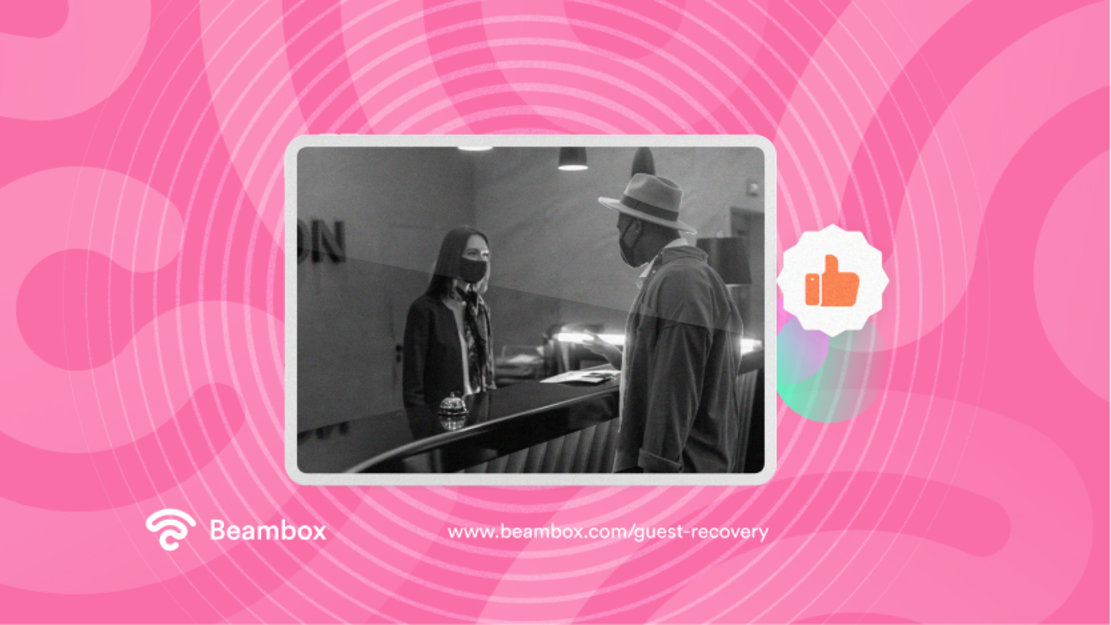Guest Recovery: 6 Steps To Turn Negative Situations Around
Dissatisfied customers are a part of every business. You can’t avoid such situations even if you do everything right. However, you can turn those negative experiences into positive ones with a guest recovery plan.
Customers are going to come to you with their complaints. If you don’t have a way of dealing with them, you might lose the client forever, increasing customer churn. That’s because a single negative experience is enough to discourage a customer from ever returning to your business.
This article will help you avoid that with six steps. Plus, we’ll discuss what guest discovery is and its benefits for businesses. So, without further ado, let’s unpack!

What Is Guest Recovery?
Guest recovery is the process of addressing unhappy customers and turning their negative experiences into positive ones. It usually involves going the extra mile to fix a problem and potentially turning disgruntled customers into loyal supporters. This, in return, gives your business a higher CLV (Customer Lifecycle Value).
Moreover, it’s a chance for you to let customers know how important they are to your business. When you make guests feel heard, you create a positive impression in their minds even after service breakdowns. Owing to that, they will be loyal to your small business over your competition and even encourage others to do the same. But this won’t be possible if you don’t create a plan for dealing with negative events.
It’s also important to state that there are various frameworks businesses use for it. One of them is the HEART principle, which stands for hear, empathize, apologize, resolve, and thank.
Another one is the LEARN principle, where you learn the problem, then empathize, apologize, recover, and nurture.
However, regardless of your chosen framework, the result will be customer satisfaction.

Top 4 Benefits of Guest Recovery Plans
Throughout this discussion, we’ve been hinting at the benefits of a guest discovery process. Now, it’s time to dive into the details. So, here are the top four benefits of such plans every business should know:
- Customer retention and loyalty: It’s common knowledge that acquiring a new customer is five times more expensive than retaining one. This is why almost all businesses prioritize customer retention. One way to do this is by creating a guest recovery plan and using it to satisfy angry customers. In return, you’ll get long-term customer loyalty, starting a domino effect of good things for your business.
- Word of mouth: When you solve customer problems instead of dismissing them, they become your brand ambassadors. They post positive reviews about your business online and tell their friends and family to visit you. This word-of-mouth marketing can bring you new customers.
- Positive image: By empathizing with customers and never letting them return disappointed, you create a positive image of your brand. Seeing your attitude towards customers, other people also start trusting you.
- Increased sales: As mentioned earlier, recovered guests often bring you new business. This can increase your sales and revenue.
6 Steps to Recovery That Leave Your Customers Satisfied
According to a survey, 83% of customers say they’re more likely to stick with a brand that resolves their issues. From the outlook, this sounds easy to achieve.
However, solving customer problems requires proper planning and preparation. Otherwise, you might panic when facing an angry customer, which will only escalate the situation.
To avoid falling into this hole, here are the six steps you need to take for successful customer recovery.

1. Take Steps To Prevent Failure
Some business owners might not realize this, but customer recovery starts before customers file a complaint. After all, if you can prevent service failures, you won’t have to deal with angry customers.
Therefore, the first step to guest recovery is preventing problems in the first place. Here’s your answer if you’re wondering how.
Start by monitoring online reviews about your business, services, and products. If you find multiple instances of the same issue, know it’s time to improve.
Looking at customer loyalty analytics and analyzing feedback allows you to judge customer expectations. When you know what your customer needs, you can proactively fulfill those demands.
Moreover, you must actively engage with your customers both online and offline. If you think they might face an issue, inform them beforehand.
For example, let’s say you’re in the food delivery business. If you find unusual traffic on a customer’s route, let them know about the situation and apologize for any inconvenience.
Having genuine face-to-face conversations with your customers will also work in your favor. Try to identify your weak points, but do this without being aggressive. Remember that these conversations work better when understanding expectations and preventing failures.
2. Be Ready To Face Angry Customers
The second step is always to remind yourself that no matter how hard you try, you can’t keep everyone happy. Putting off preparations for negative situations isn’t the right mindset for solving customer problems.
Therefore, train your employees to face negative situations with confidence and composure. They’ll be on the frontline when a customer comes demanding a solution. Empowering them with the right techniques will set the tone for the recovery session.
Don’t be afraid of letting them take charge when talking to dissatisfied customers. The situation might escalate if they have to call the manager, even if it is the smallest inconvenience. Guests might label this as poor customer service. Besides, it’s not good for your reputation in the eyes of the onlookers.
Now, you can take multiple approaches to train your employees for such situations. However, a combination of manuals with everything from etiquette to hand gestures, role-playing exercises, and communication skills will work best.

3. Put Your Customers First
Believe it or not, we’re still discussing the stages where the customer hasn’t filed a complaint yet. This should be enough to emphasize the importance of proper planning for customer recovery.
Part of the psychology of loyalty for business owners is keeping a customer-focused mindset.
This means you must respect how your customers think and understand that they’re not deliberately trying to make your life harder. Every sensible customer knows that businesses can’t avoid all problems.
But if you make excuses for why the problem occurred, even the most sensible of your customers won’t listen.
So, the first step to putting your customers first is to avoid making excuses and owning up to the situation.
Moreover, customers who file complaints usually expect you to make amends through incentives and discounts. Keep this in mind when dealing with negative customer experiences.
4. Listen to the Problem Carefully
After taking the precautionary measures and planning for the recovery, you’re ready to face unhappy customers. Ironically, you don’t have to do anything when the customer files the complaint unless it’s online. Doing anything apart from listening will put you in a difficult situation.
So, if a customer physically visits or calls you for the issue, maintain composure and just listen.
Pay close attention to their complaint, hand gestures, and tone to judge how bad the situation is. Don’t make the mistake of interrupting the customer or making excuses.
Your body language also says a lot about how the customer will feel. If you avoid eye contact, they might feel like you’re not interested.
Remember, listening carefully is sometimes enough to calm the customer down. Moreover, it will help you understand the problem to a minute level to solve it properly.
Alternatively, the customer might complain through text messages or online. In this situation, you can’t show them you’re listening through body language and gestures. But you can show it through your response, which takes us to the next point.

5. Empathize With the Disgruntled Customer
Once you’ve understood the problem, it’s time to respond to the customer. The first thing you have to show is empathy. Customers want to feel understood, so don’t shrug it off with vague excuses.
Tell them you understand the problem and their reaction. Repeat the problem so they do not doubt that you listened.
If the customer is very angry, rational arguments won’t make the recovery. Instead, focus on making them feel comfortable. Tell them you understand that feeling angry in such a situation is completely normal.
Whether you face them face-to-face or online, it’s easy to show empathy if you choose the right words.
For example, let’s say a customer is angry about dirty sheets in their hotel room. Here, you should say something like this:
“I see that you’re having an issue with the dirty sheets in your hotel room. I completely understand how frustrating that must be for you, and I appreciate you bringing it to my attention.”

6. Present a Sincere Apology and a Solution
When a customer comes forward with a complaint, they expect you to apologize, even if it wasn’t your fault. Therefore, your response should include a sincere apology.
But remember, customers should feel like they’re talking to an authoritative person capable of immediately solving their issues.
As mentioned earlier, customers expect you to give them discounts or incentives when they encounter an issue. Plus, the recovery process will be incomplete without presenting them with a solution. To put this into context, let’s expand on the above response:
“I see that you’re facing an issue with the dirty sheets in your hotel room. I completely understand how frustrating that must be for you, and I appreciate you bringing it to my attention. Please accept my apologies for the inconvenience it has caused you.
Let me send someone to replace the sheets right away. As a token of my apology, I would like to offer you a complimentary breakfast from the hotel.”
Use Guest Recovery Solutions for an Easier Process
It’s hard to imagine a business process going smoothly without technology and with good reason. Technology prepares you with everything you need during recovery.
For example, customer relationship management software or CRM can help you centralize guest information. Doing so can personalize their experience and increase your chances of recovery.
Don’t forget to use communication tools like chatbots and surveys to anticipate customer demands.
Lastly, ticketing and helpdesk systems are probably the best options for guest recovery solutions. They help you file complaints, track the recovery process, and keep the customer in the loop.
Recovered Guests Sometimes Become the Most Loyal
When you solve customer issues in hopes of winning them back, you’re participating in guest recovery. When you recover guests, this might affect customer loyalty metrics. Customers want to feel attached to the brands they invest in, and recovery is one way to facilitate that.
Understanding what your customers want is important. Beambox’s system allows for customer data collection, which helps better understand customers and prevent customer churn. It also simplifies managing online reputation by integrating several review platforms into one dashboard. Do you want to try it out? Start your Beambox free trial today!
Get Started With Free WiFi Marketing
Beambox helps businesses like yours grow with data capture, marketing automation and reputation management.
Sign up for 30 days free


